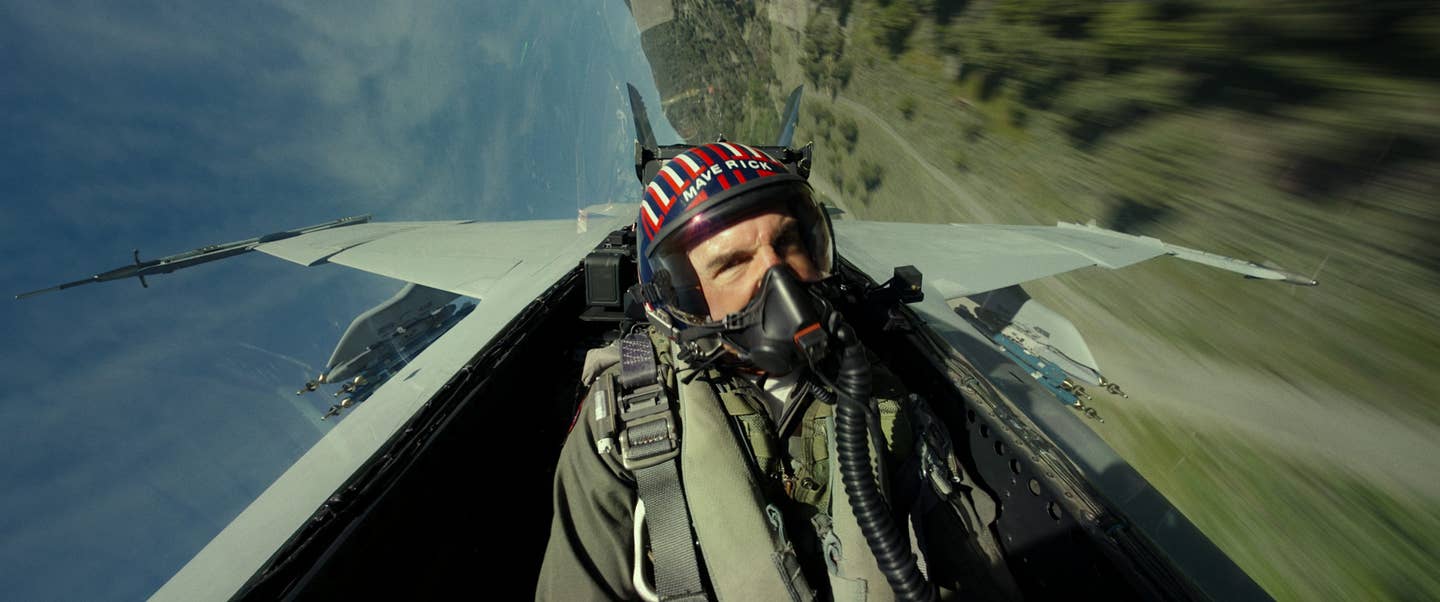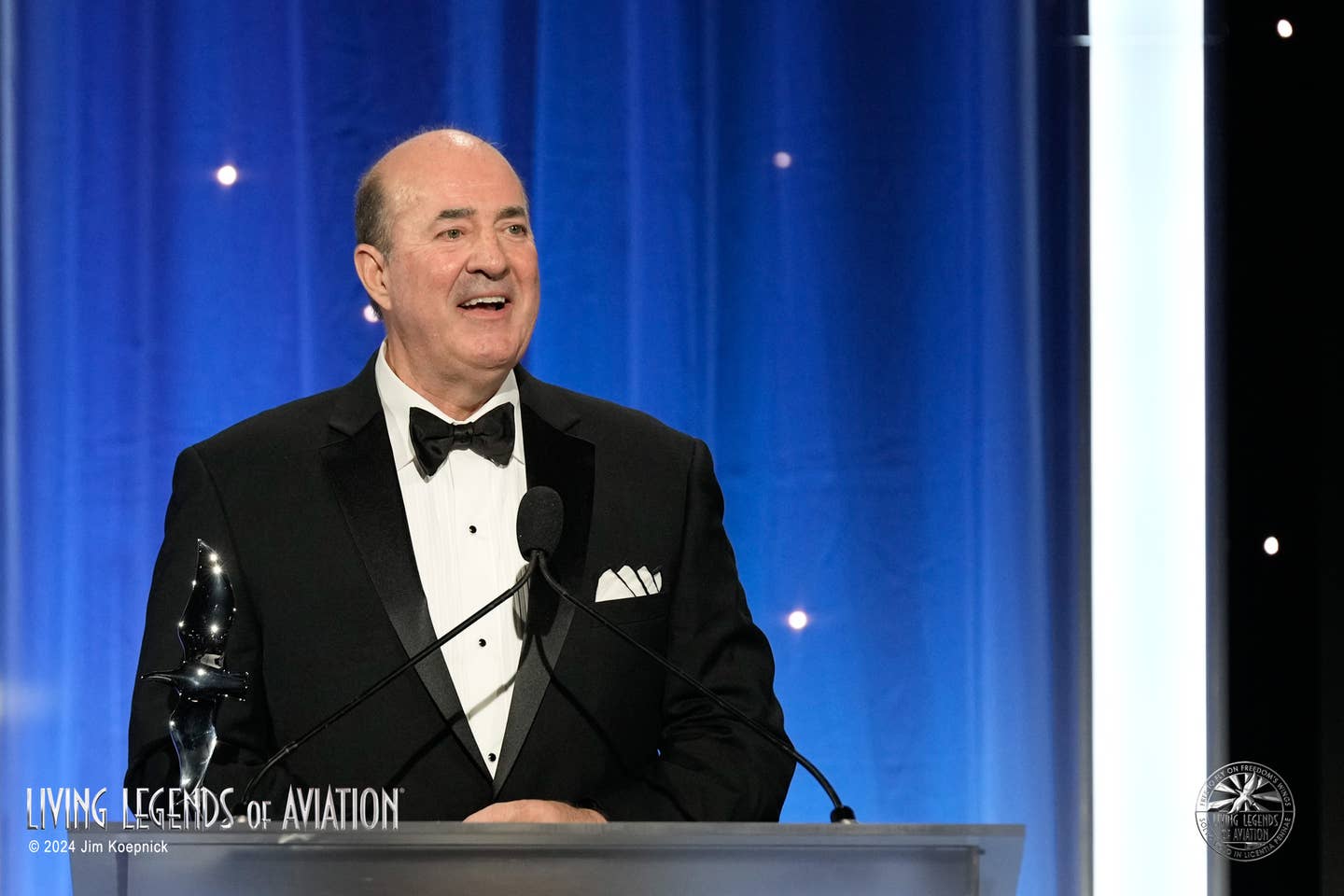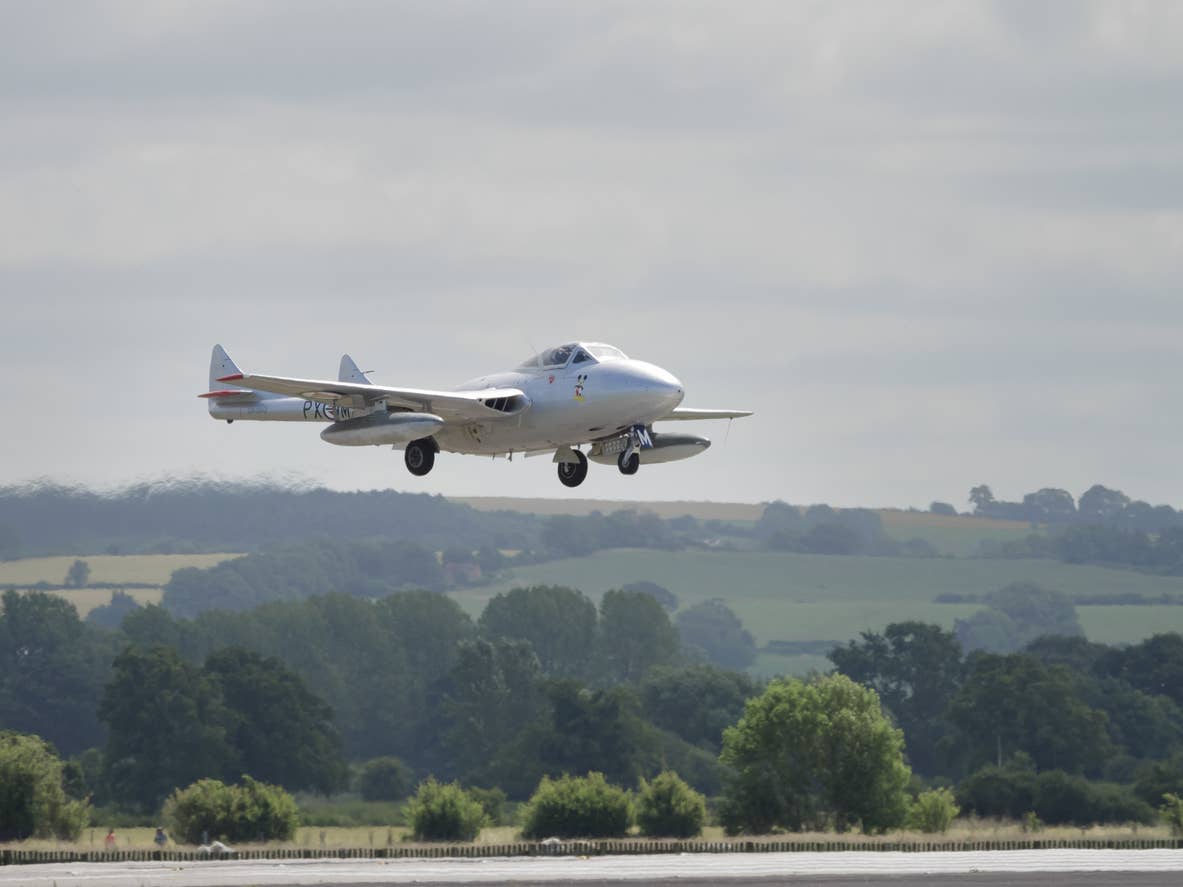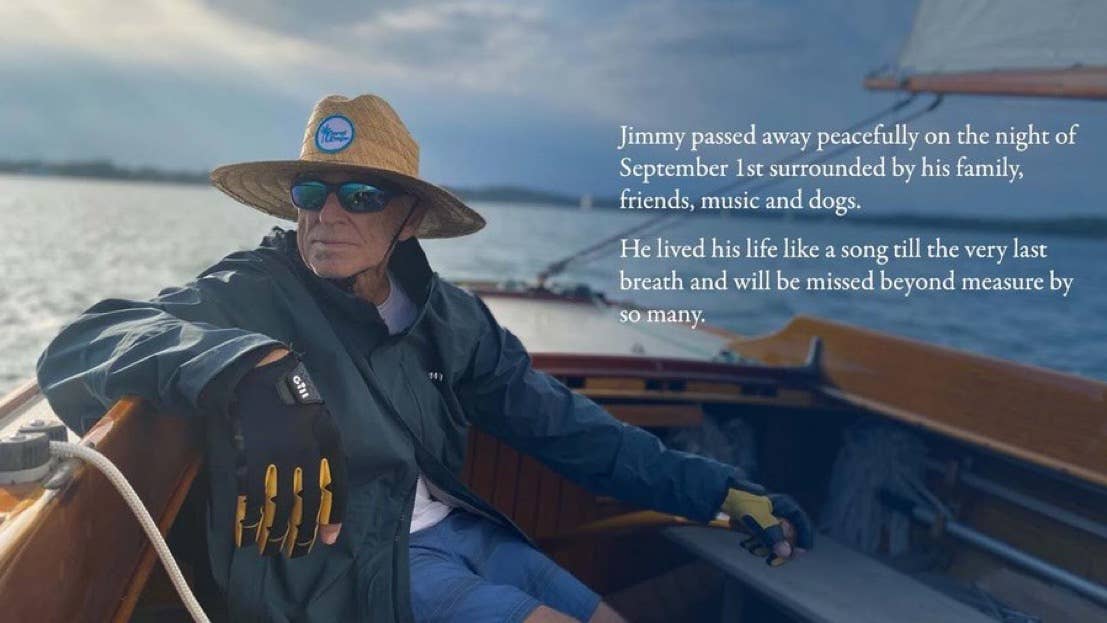
Aerial coordinator Kevin “K2” LaRosa II says Tom Cruise inspired him to “set the bar higher.” [Courtesy: Skydance]
For a movie as iconic as Top Gun, the sequel has been a long time coming. Normally, the ink is barely dry on the celluloid of version 1.0 before the next installment goes into production, ready to ride the wave of popularity and interest of that first smash hit.
But this aviation-fueled audience has waited since 1986—and there’s good reason for that. FLYING learned the secrets during an interview with top Hollywood aerial coordinator Kevin “K2” LaRosa II. He’s vice president of aerial film production for Helinet Aviation Services, and he produced the dynamic and compelling aerial ballet that comprises the heart and soul of Top Gun: Maverick.
The Backstory
LaRosa learned the art of aerial movie coordination and the professional craft of being a stunt pilot from watching and working with his father, Kevin LaRosa, Sr. K2’s a third-generation pilot, in fact. “My grandfather flew in the New Jersey National Guard,” he said. “He flew C-97s, he flew P-51 Mustangs, among other aircraft—and that is what sparked my dad’s interest in flying.”
Kevin LaRosa, Sr., ended up becoming a highly successful motion picture and television stunt pilot and aerial coordinator, and he worked on hundreds of motion pictures and TV shows. “One thing about my father that I truly love and idolize is that he flies multiple platforms, P-51 Mustangs, T-28s, T-6s, into jets and helicopters. He just was this very well-rounded aviator. I feel fortunate that I was able to be exposed to so many things at a young age.”
“I knew from when I was a little boy exactly what I wanted to do.”
But LaRosa, Sr., didn’t give his son an immediate leg up into the industry.
“You can’t just become an aerial coordinator by being somebody’s son,” said K2. “Nobody will ever trust you. When I was a young teenager, I was already working in the film business with my dad, not in a pilot capacity, but in a supporting role.” And his father delivered some rock solid advice: “I needed to leave the industry that I truly loved, and go become my own aviator. Go become my own pilot and my own person.” It was also the hardest advice he ever had to receive.
K2’s had other aviation heroes, including Chuck Yeager and Bob Hoover, “mainly because of their true airmanship, and because of being just aviators to the core, and I always loved and was interested in how many different platforms they could fly…get out of one aircraft and hop in a jet, or get out of a jet and hop in this airplane. And that aircraft was literally an extension of their body.”
One pilot in particular served as a mentor to K2, and that’s Thomas C. McMurtry, who passed away January 2015. “That gentleman is an American hero,” said LaRosa. “ He was a mechanical engineer, he was a naval aviator, he was a test pilot for NASA’s flight research center, and he was a consultant for Lockheed Corporation.
“When I first started flying camera jets at the young age of 21, Tom took me under his wing flying a Lear 25 camera jet, which was from a company called Wolf Air Aviation, and taught me everything about military-style flying. So, as a civilian I ended up with this background and knowledge base about the military, how to fly with the military, how to brief with the military, formation techniques, dogfighting techniques—every kind of formation you could think of, with dissimilar platforms. Night formation, IMC formation—stuff that civilians typically are not introduced to.”
That skill set that McMurtry gave to K2 is irreplaceable for the professionals who fly photo missions—particularly the flying of dissimilar aircraft in photo work, which is arguably the most objectively hazardous thing civilian pilots will do. Add in the high speed of dissimilar jets, and the hazard factor multiplies.
To do this well, a pilot must be an aviator, according to LaRosa. An aviator doesn’t just have natural talent, or is someone who knows every rivet by the book—but someone who feels the aircraft, who straps it on. “I was taught from a young age to listen to the aircraft,” he said. “It talks to you, and you can feel things that it likes and doesn’t like. And that goes from a C-130 to a Cessna 150.”
The Secret? The L-39 Cinejet
The filming for the sequel to Top Gun had to represent the height of the craft. The Aero Vodochody L-39 Albatros formed an excellent airframe to build upon in order for LaRosa to create the Cinejet—an optimized aerial camera platform with a camera mounted on its nose. But this is no GoPro Hero hanging out in the breeze. “We spent a great deal of time and energy developing the jet…making it what it needed to be for Top Gun: Maverick.”
“Early in 2016, I knew we needed a jet-based platform to fly the newest technology to meet the demands of helping to tell this great story. At that time, the technology did not exist, or had not been applied, so I designed and helped develop the L-39 Cinejet.” LaRosa partnered with the Patriot Jet Aerobatic Team as well as Helinet Aviation and Shotover to create the Cinejet.
The Cinejet gives the team the ability to maneuver the camera in ways they had never done before. “The older technology, including the technology used on the original 1986 film required the camera pilots to essentially fly very smoothly, because those systems were only partially stabilized.”
“When we watch footage from past movies that showed aerials, we would typically see some instability come through. Furthermore, we would see lack of clarity or sort of a diminished image. What we needed for Top Gun: Maverick was the clearest, sharpest, best technology and best camera payload possible.”
So What’s on Board?
The Cinejet carries a Shotover F1 Rush, which is a six-axis stabilized mounting system, and for Top Gun: Maverick it housed a Sony Venice camera with Fujinon lenses. “It allowed me to maneuver that aircraft through canyons at high rates of speed pulling up to 3Gs, without making our image shaky or unstable,” said LaRosa.
“In the back of the L-39 [in an ejection seat] is an aerial director of photography, we had two of them on the movie, David Nowell and Michael FitzMaurice. These gentlemen are in charge of framing and composing the shots that we see.”
All of the helicopter and jet aerials were shot by Nowell and FitzMaurice, flown in the Cinejet, an Embraer Phenom 300 camera jet, or an Airbus AStar/H125 helicopter. “It’s my job to put the camera in the right spot, and it’s their job to compose the shot,” said LaRosa.
“The L-39 allowed us that flexibility, agility, and maneuverability to really get into the fight and give the audience a bit of a thrill ride. That wasn’t possible before this time.”
The L-39’s long nose and strong airframe allowed LaRosa to mount the camera a great distance forward of the wings. “This gives the L-39 a really good field of view. We can look beneath our jet, behind, above our wing, and behind us, before we see our own aircraft in the shot. This is something different and new that wasn’t possible before.” The team also cleaned up the airframe even further, moving comm and GPS antennas, wiring, and other elements.
A new piece of technology entered service in the midst of filming for Top Gun: Maverick: the Phenom 300 camera jet. It can carry two F1 Rushes, one mounted on the nose and the other on the tail. “This aircraft was used in the movie whenever I wanted to go long distance out over the water,” said K2. “It gave us two-engine reliability and safety. And it also gave us longer sortie times. The Phenom carried more fuel and was able to stay on station longer. The back of the aircraft was configured with two operating stations, at which both [Michael and David] operated from.” Each camera was fitted with a different lens, one wide angle and one very long lens.
It was not the platform for dog-fighting or canyon sequences, however. That other platform? The Airbus H125 AStar (formerly Eurocopter AS 350), which carries a Airfilm AF200 bracket holding a Shotover K1 camera gimbal capable of holding a larger camera body or a long lens. It conveys a sense of speed and agility, showing jets ripping past the lens.
A Special Moment On Set
It turns out that K2 isn’t the only one who knows the Cinejet made the high degree of realism possible in Top Gun: Maverick—actor Tom Cruise made this known from the beginning.
“When we started filming Top Gun: Maverick, there was a meeting that took place, in which Tom Cruise did an exceptional job setting the scene and helping the crew understand the monumental task ahead of us,” LaRosa remembered.
“What [Cruise] did for me on that day was truly inspire me to set the bar higher than it had ever been set in regards to aerial cinematography.”
Kevin “K2” LaRosa II, aerial coordinator, Top Gun: Maverick
“What he told us was, we’re almost at a disadvantage. We’re making a sequel to a very iconic movie. And we needed to wait this long so there was a story worth being told. And we needed to wait this long so there was technology available to help us tell the story. And he knew, and inspired everybody who was going to work on this movie that the movie needed to obtain a level of perfection that had not been seen.
“What [Cruise] did for me on that day was truly inspire me to set the bar higher than it had ever been set in regards to aerial cinematography.”
One of the most special days on set for LaRosa was a normal day, on a Navy base: “Briefing’s complete, and we’re standing on the ramp next to an F-18 and here comes Tom out of the PR shop, which is the room where they get outfitted with their helmets and their parachutes. And as he’s walking past me and out to this F-18, he’s in his full wardrobe and naval aviator get-up, and I thought, ‘That’s Pete “Maverick” Mitchell, literally walking by me.’ That’s where it became very real…an instant goosebump moment.”
What Does It Take?
Getting to those moments takes a lot of effort, skill, and dedication to achieve, as LaRosa knows well.
“I put a big emphasis on training,” he said. “I personally try to fly every aircraft that I fly at least every 12 months. That goes for the large jets, and the small airplanes, and the helicopters. When I’m hired by the studios as an aerial coordinator, my job is not necessarily to always be the pilot on camera. My job is to put the best person, most experienced person, and the safest person in the right seat.”
He went on to emphasize the point. “My job is first and foremost to ensure that everyone is safe. Second, I want the aircraft to return to service, and third is that we make incredible, dynamic, amazing pictures that meet or exceed the requests of our customers.”
The job responsibilities of an aerial coordinator run the full gamut, and include:
- Scripting
- Set construction and breakdown
- Budgets
- Preplanning with ATC and FAA
- Briefing
- Actual flight sorties
- Debriefing
- Finalizing the mission
“My true passion is being behind the controls and flying,” said LaRosa, “but sometimes I am best served sitting next to the director and holding an air-to-ground radio and helping him to direct the aerial sequences and watching the shot.”
“You’re 50 percent pilot and 50 percent filmmaker.” A person needs a good understanding of lighting, composition, plus cameras, lenses, and their movement, and the tools of the cinematographer’s trade—along with a deep skill set as a pilot on a variety of aircraft.
K2 took on all kinds of aviation jobs to build his resume, from Cessna 172s flying traffic to flying as a corporate pilot and flying helicopters—and that’s what he recommends to those who would want to pursue this career. “You need to have a very strong background in aviation to do this job.” While you’re moving in that direction, study cinematography and how movies are made. That’s the 50/50 split that a person needs to master to join this rewarding and unique industry.

Subscribe to Our Newsletter
Get the latest FLYING stories delivered directly to your inbox






